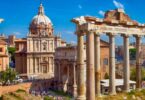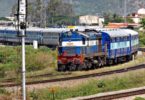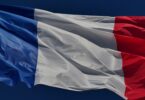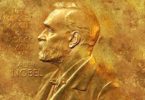Organization for Economic Co-operation and development questions and answers:
___ is, “a form of organisation wherein persons voluntarily associate together as human beings on a basis of equality for the promotion of the economic interest of themselves”.
(a) Cooperation
(b) joint stock companies
(c) cartels
(d) trusts
A __ has been defined as an “economic and social organisation of the working people, serving not only the interests of the members, but also social progress,” which promotes safeguard and realizes the interests and aspirations of the working people”.
(a) Cooperative organisation
(b) Private organisation
(c) Public organisation
(d) All of these
__ is considered to be the birth place of the Co-operative movement in the world.
(a) USSR
(b) Britain
(c) Israel
(d) France
Cooperation is a product of __
(a) First World War
(b) Second World War
(c) Industrial Revolution
Flannel Weavers organized a co-operative movement in __
(a) Germany
(b) England
(c) France
(d) USSR
Related: trivia questions about education
Consumer Cooperative Movement started in __
(a) Germany
(b) England
(c) France
(d) USSR
__ published a Treatise on the Domestic Agricultural Association in 1822.
(a) France Charles Fourier
(b) Schulze-Delitzch
(c) Friedrich Wilhelm Raiffeisen
In Germany, __ was the promoter of urban co-operatives and co-operatives in handicrafts.
(a) France Charles Fourier
(b) Schulze-Delitzch
(c) Friedrich Wilhelm Raiffeisen
__ was the promoter of rural credit co-operatives in Germany.
(a) France Charles Fourier
(b) Schulze-Delitzch
(c) Friedrich Wilhelm Raiffeisen
F.W.Raiffeisen was the promoter of __ in Germany.
(a) Dairy Co-operatives
(b) co-operatives in handicrafts
(c) urban co-operatives
(d) rural credit co-operatives
Related: Philosophy quiz questions
__ is the birthplace of the co-operative credit movement in the world.
(a) Great Britian
(b) Denmark
(c) Germany
(d) USSR
In Denmark, most of the dairy products, including butter, cheese, cream and milk powder is exported and the remaining __ is sold in the home market.
(a) 50%, 50%
(b) 70%, 30%
(c) 30%, 70%
(d) 80%, 20%
In the Soviet Union, co-operatives running collective farms were called __
(a) Kolkhozy
(b) Sovkhozy
(c) Kibbutz
(d) farm houses
In the Soviet Union, the state-run farms were called __
(a) Kolkhozy
(b) Sovkhozy
(c) Kibbutz
(d) farm houses
In Israel, collective farms are called __
(a) Kolkhozy
(b) Sovkhozy
(c) Kibbutz
(d) farm houses
Related: questions about Greek mythology
The __ is a national federation of consumer cooperatives that represents and serves consumer cooperative societies all throughout Japan.
(a) Nada Consumer Cooperative
(b) Kobe Consumer Cooperative
(c) Japanese Consumers’ Cooperative Union
(d) ICA
Cooperative societies in Japan were initiated during the era of __ democracy.
(a) Edo
(b) Meiji
(c) Showa
(d) Taisho
In 1951, __ founded the Japanese Consumers’ Cooperative Union, or JCCU, which was established to represent and serve all the consumers’ cooperative societies of Japan.
(a) Toyohiko Kagawa
(b) Akira Kurosawa
(c) Yoko Ono
(d) Miyamoto Musashi
Kilimanjaro Native Co-operative Union was established in __
(a) Tanzania
(b) Kenya
(c) Sudan
(d) Egypt
___ has been called the ‘father of English Socialism’.
(a) Robert Owen
(b) Dr. William King
(c) France Charles Fourier
(d) Board of Directors meeting
Related: famous voyagers quiz
Denmark is famous for __ co-operatives.
(a) Credit
(b) Store
(c) Dairy
(d) Consumer






